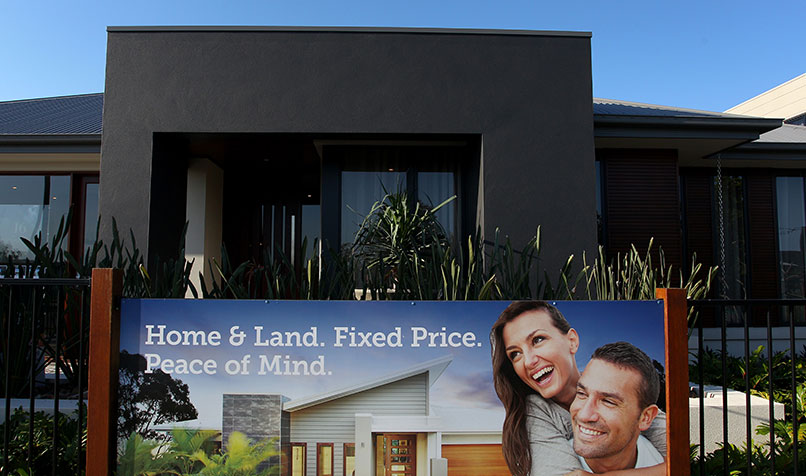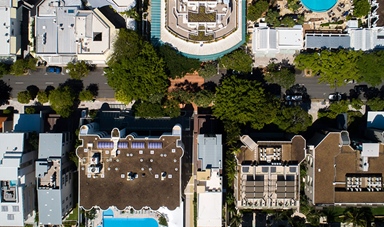Loading component...
At a glance
- Stamp duties are a lucrative source of government income, particularly in populous states.
- However, as stamp duties are pegged to market conditions, they can be an unstable revenue source, especially in difficult times, when sale prices fall.
- Economists see a case for tax reform in the governments’ approach to revenue generation from property.
By Gary Anders
Last financial year, across Australia, state and territory governments collectively reaped about A$19 billion in property transfer tax revenues, otherwise known as stamp duties.
Charged to the buyer whenever a property transaction is settled, and calculated on the sale price, stamp duties remain a lucrative source of government income, especially for the country’s most populous states.
For New South Wales, property stamp duties generated A$7.4 billion in 2018-2019, while they brought in A$6 billion for Victoria, and A$3 billion for Queensland over the same period. Other state/territory governments took in an additional A$2.6 billion between them.
However, as large as these revenue numbers were, they also highlighted an underlying problem with transaction based revenue streams.
The figures were all lower than those that had been recorded from the previous financial year, simply because of a softening in property values from 2017-2018, and reduced market turnover.
Property stamp duties are entirely pegged to market conditions, and therefore are an inherently unstable revenue source for the states and territories.
With the economic fallout from the COVID-19 pandemic in 2019-2020 placing both the residential and commercial property sectors under severe strain, it is highly likely that government stamp duty revenues will fall once again as sale prices slip in some regions and overall transaction volumes drop.
Inefficiencies and inequities

At present, every Australian state and territory has a different stamp duty calculation method, although each uses some form of sliding scale based on the transaction price.
For example, New South Wales, Victoria and the Northern Territory all apply fixed percentage rates in a tiered structure, depending on a property’s sale price.
Queensland, South Australia and the ACT charge set dollar amounts based on the sale price, plus additional fees for every A$100 over certain price brackets. Tasmania and Western Australia also charge flat stamp duty dollar rates based on the sale price, and then additional fees are levied on a percentage basis for amounts over certain transaction values.
Dr Gareth Bryant, senior lecturer in political economy at the University of Sydney, believes there is a strong case for tax reform in the way state and territory governments approach revenue generation from property.
He points out that, as well as being an unstable revenue source for governments, stamp duty creates inefficiencies in the housing market, because it is substantial and can influence people’s decisions to sell and buy property.
“It’s especially acutely felt by first home buyers, because it massively adds to the kind of deposit that’s required for people buying their first homes,” Bryant says.
Retirees also can be reluctant to move from their homes, knowing they will likely need to pay out tens of thousands of dollars in stamp duty when they make another purchase, even though some states have introduced concessional rates for pensioners.
However, there are already changes taking place on the stamp duty front. In 2012, the ACT government began a 20-year tax reform program that will ultimately result in transfer duties on property being abolished in favour of higher annual property rates. In end-May this year, the New South Wales government announced a potential phasing out of stamp duty as part of a broad taxation review.
Residential stamp duty rates have been progressively reduced every year, and from 1 July 2018, duty was completely abolished for all commercial property transactions of A$1.5 million or less.
First home buyers in the ACT also no longer have to pay stamp duty on property transactions, as long as their household income is less than A$160,000.
However, progressive reductions in residential stamp duty in the ACT have led to sharp increases in property rates to compensate, with Canberra homeowners facing average fee hikes of 7 per cent in each of the next three financial years.
Comparing property tax systems
Australian governments considering property tax reform may be able to take something away from the systems in place in other jurisdictions.
In Hong Kong, where a high percentage of property is rented, owners are levied with a 15 per cent flat property tax on the gross annual rental income.
Similar to Australia, stamp duty is levied on purchases on a sliding scale. For residential, it ranges from 1.5 per cent for transactions up to HK$2 million, to a mix of set dollar amounts and additional percentage fees for higher amounts. The maximum rate is 8.5 per cent for transactions above HK$21.74 million. Commercial transactions are assessed on a different cost and percentage scale.
Danny Kwan, a tax partner with PwC in Hong Kong, says there are a lot of sensitivities in the market when it comes to property taxes.
“Hong Kong is in a very strange situation. There are a lot of retired people, and there are a lot of tycoons who are holding most of the land resources,” Kwan notes.
“The tax is very low, and there’s no capital gains tax. Hong Kong attracted a lot of investors, and people became rich when they bought more and more properties.”
Kwan says this includes the “indigenous people” living in Hong Kong villages, who hold a lot of the agricultural land.
“These people have a vested interest already with the Hong Kong property market. A lot of the time, when the government needs to increase the land supply, it’s actually quite difficult to move, because it’s not easy to find a piece of land. That’s why the prices keep going up.”
In a bid to keep a lid on property prices, rather than imposing higher taxes on citizens, the Hong Kong Government has focused its attention on deterring foreign investors.
In 2010, the Hong Kong Government introduced a 30 per cent transactional tax for foreign buyers (known as Buyer’s Stamp Duty), as well as further taxes ranging from 10 to 20 per cent if a property is sold within three years (known as Special Stamp Duty).
"There is a much stronger case for removing stamp duty for owner occupiers than there is for investors. Stamp duty can have a useful counter-cyclical effect on the investment property market."
This was largely aimed at curbing the significant amount of offshore money pouring into the country.
“Using tax, the government is already affecting the property market, but it only helps in deterring money from the mainland,” Kwan says.
“Whether the government can use another tax mechanism to change the current situation will be very difficult, because we are kind of at a crossroads on whether we should maintain the capitalist market driven by supply and demand.”
In Singapore, about 80 per cent of the S$4 billion (A$4.3 billion) in property taxes received by the government annually is from commercial properties.
Property tax rates on residential properties are applied on a progressive tax scale, with owner-occupiers taxed between 4 per cent and 16 per cent, depending on the assessed annual rental value (ARV). No tax is payable on the first S$8000 (A$8700).
That’s the situation for most of the Singaporean population, who live in subsidised public housing. Although they receive an annual property tax bill from the government, there is rarely anything to pay.
Residential property investors also pay tax on a sliding scale, ranging from 10 per cent to 20 per cent, depending on the ARV.
Stamp duty is payable on residential transactions under a tiered system that caps out at 4 per cent of the purchase price for properties valued in excess of S$1 million (A$1.1 million). All commercial properties are taxed 10 per cent of the ARV.
“In so far as property tax is concerned, the impact is not so great because most people see property tax as a kind of municipal charge,” says Leung Yew Kwong, principal consultant at KPMG in Singapore. “Because the amount is not a lot, they’re not concerned by property tax when they buy a property.
“Generally speaking, people are quite prepared in their mind to pay the stamp duty up to 4 per cent. The only problem comes when you buy a second property.”
For second properties, the duty rate is far higher, at 25 per cent, under what is known as Additional Buyer Stamp Duty.
A possible roadmap for Australia
Bryant advocates that Australian states and territories move away from transactional stamp duties towards land-based taxation systems.
He explains that the first big advantage of a land tax is that it is usually levied on the unimproved, underlying value of land, which does not discourage the development of land.
“The second main reason in favour of land tax is that it is progressive, so it is a way of shifting our tax system towards one that is taxing wealth, and therefore addressing wealth inequalities.
“The third reason is that it is a more stable source of revenue for the state governments around Australia. That’s because underlying land values tend to be much more stable than housing prices and the turnover of the housing market.”
However, he adds, there should be a distinction between owner-occupiers and investors.
“I think there is a much stronger case for removing stamp duty for owner-occupiers than there is for investors. Stamp duty can have a useful counter-cyclical effect on the investment property market.”
Bryant says that land tax is an untapped source of revenue waiting for state governments to draw upon, but politics is the thing stopping them.
“That’s because the idea that there could be a tax on the family home is something that would leave state governments exposed to serious political opposition,” he says.
“What would need to be done there is a range of options to mitigate those problems, to make it fairer and politically acceptable.”
This would include having higher land tax for more expensive properties, having value thresholds for when land tax comes into play, and making sure there are arrangements for people to defer their land tax if required.
“Ideally, coordination between state governments would be crucial to the politics of implementing this type of reform.”

